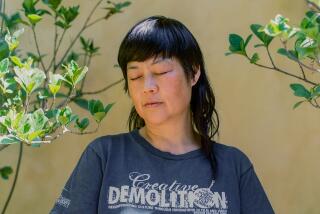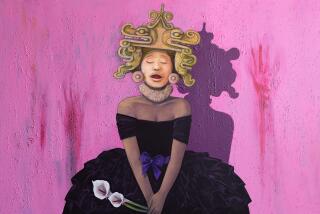‘Dinner Party’: Emotional, Moving Feast
- Share via
After reading Christopher Knight’s review of “Sexual Politics: Judy Chicago’s ‘Dinner Party’ in Feminist Art History” at the UCLA/Armand Hammer Museum (“More Famine Than Feast,” Calendar, May 2), which included a rather harsh dismissal of “Dinner Party,” I went to see the show for myself.
What I saw bore little resemblance to Mr. Knight’s description. I found Chicago’s work both viscerally and emotionally moving. While I might fault small details, the ambition and scope of the project showed a depth of quality generally lacking in contemporary art.
Knight says Chicago’s work has “long been denounced as politically retrogressive” for making a monument to the lost/ignored history of important women. In doing so, Knight participates in the tradition of belittling and suppressing this history.
Flawed or not, the work is an important model for questioning the status quo from outside the bounds of traditional artistic mediums.
JAMES GRIFFITH
Los Angeles
The barbed-wire fence of labels that Knight constructed around “Dinner Party” seems no match for its powerful emotional and intellectual communication. Since we all view art through a filter of our gender, upbringing, education, political beliefs, etc., I believe many people will find viewing this work to be a very moving experience.
CAROLYN WOLF
Torrance
More to Read
The biggest entertainment stories
Get our big stories about Hollywood, film, television, music, arts, culture and more right in your inbox as soon as they publish.
You may occasionally receive promotional content from the Los Angeles Times.










